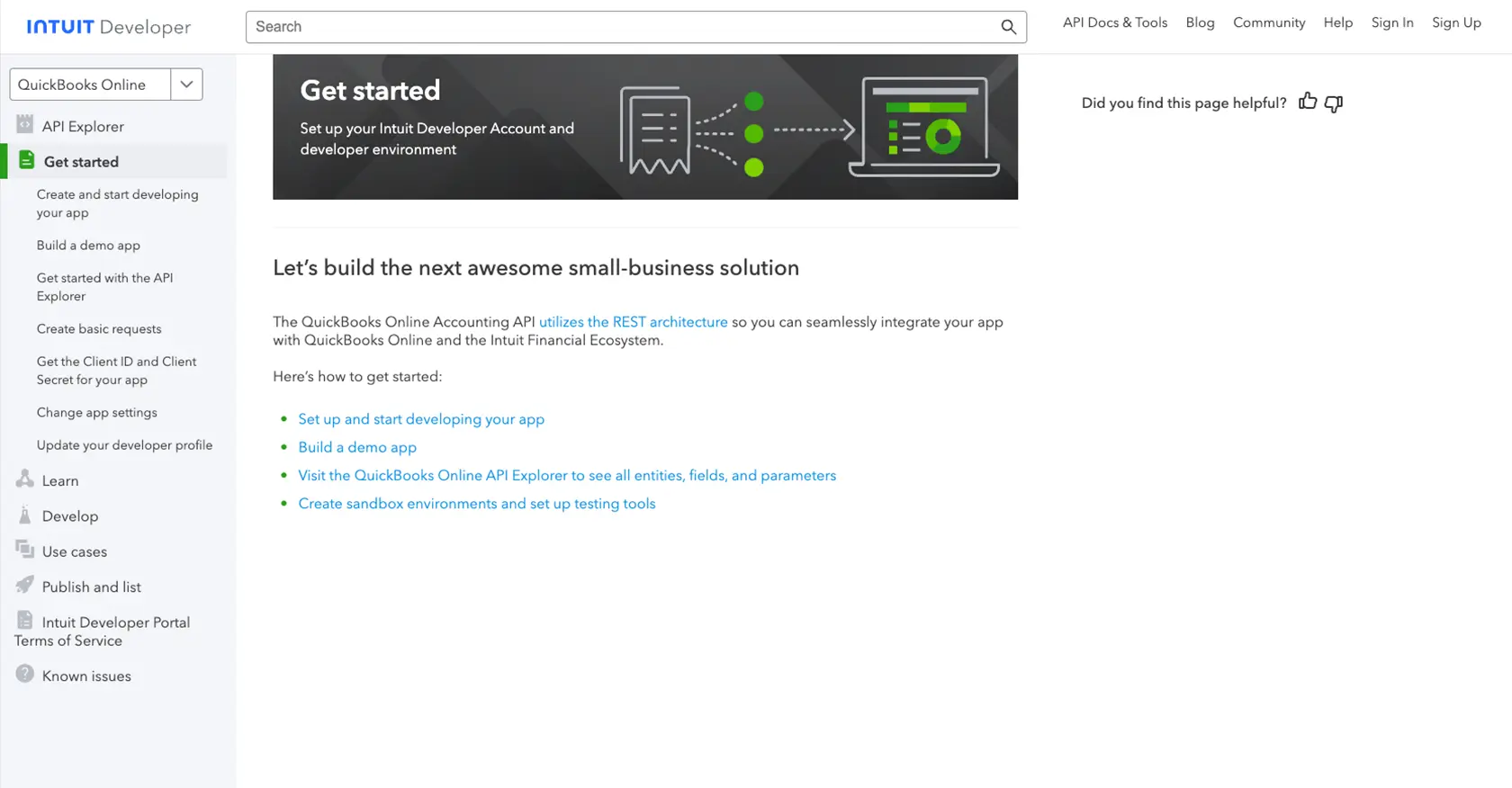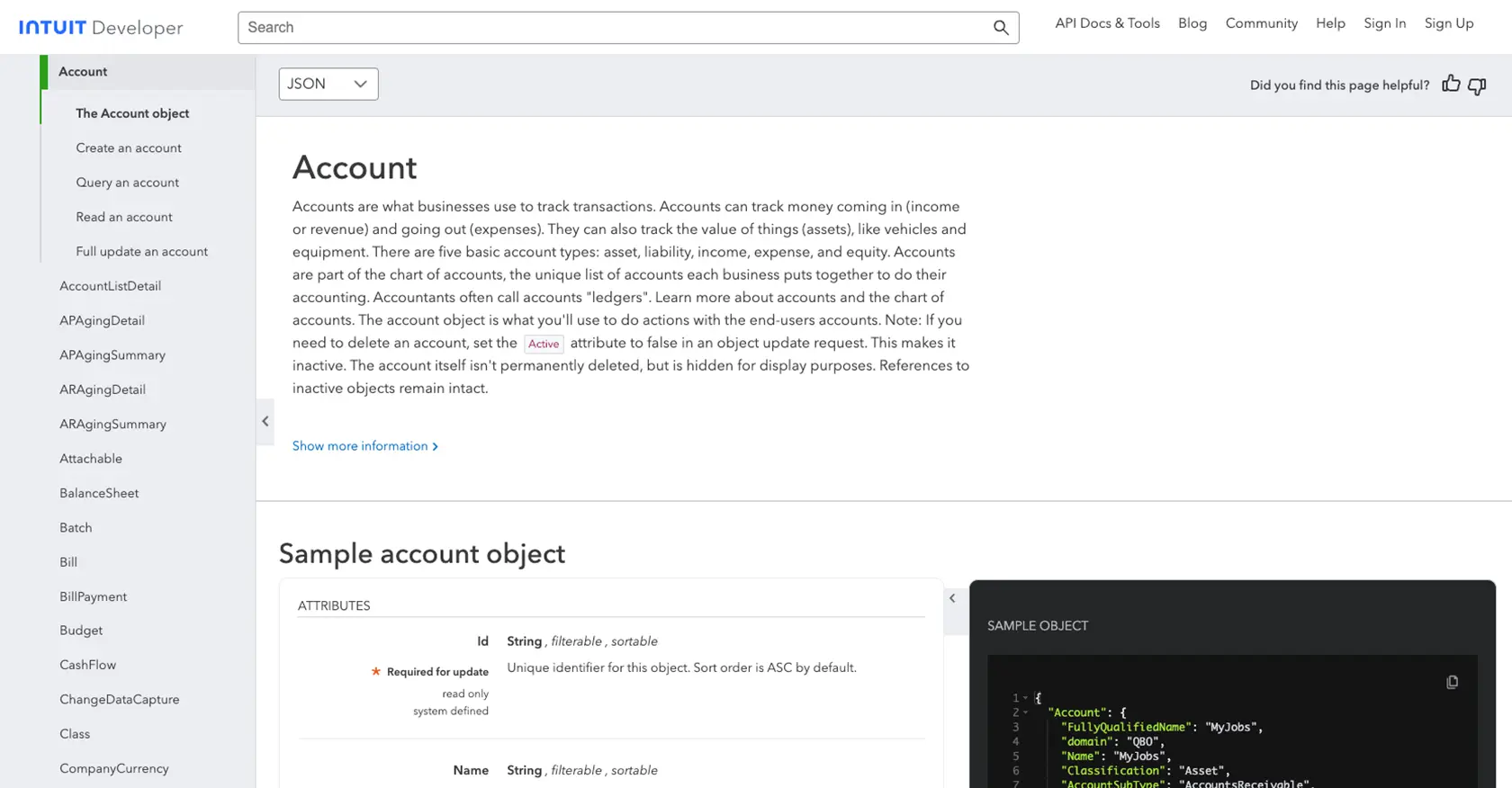Using the Quickbooks API to Get Accounts (with Python examples)

Introduction to QuickBooks API Integration
QuickBooks is a widely-used accounting software that helps businesses manage their financial operations with ease. It offers a comprehensive suite of tools for invoicing, expense tracking, payroll, and financial reporting, making it a popular choice for small to medium-sized enterprises.
Integrating with QuickBooks' API allows developers to automate and streamline accounting processes, such as retrieving account information. For example, a developer might use the QuickBooks API to fetch account details and generate financial reports, enhancing the efficiency of financial management tasks.
Setting Up Your QuickBooks Sandbox Account for API Integration
Before you can start interacting with the QuickBooks API, you need to set up a sandbox account. This environment allows you to test your integration without affecting any live data, providing a safe space to experiment and develop your application.
Creating a QuickBooks Developer Account
To begin, you'll need to create a QuickBooks Developer account. Follow these steps:
- Visit the QuickBooks Developer Portal.
- Click on "Sign Up" to create a new account or "Sign In" if you already have one.
- Complete the registration process by providing the necessary details.
Setting Up a QuickBooks Sandbox Company
Once your developer account is ready, you can set up a sandbox company:
- Log in to your QuickBooks Developer account.
- Navigate to the "Sandbox" section in the dashboard.
- Click on "Add a Sandbox" to create a new sandbox company.
- Choose the type of company that best fits your testing needs and complete the setup.
Creating a QuickBooks App for OAuth Authentication
QuickBooks API uses OAuth 2.0 for authentication. To interact with the API, you'll need to create an app:
- Go to the App Management section in your developer account.
- Click on "Create an App" and select "QuickBooks Online and Payments."
- Fill in the required details, such as app name and description.
- Once the app is created, navigate to the "Keys & OAuth" section to find your Client ID and Client Secret.
Configuring OAuth Scopes and Redirect URIs
To ensure your app has the necessary permissions, configure the OAuth scopes:
- In the "Keys & OAuth" section, specify the scopes required for accessing account data.
- Set up the redirect URIs to handle OAuth callbacks during the authentication process.
With your sandbox account and app set up, you're now ready to start making API calls to QuickBooks. For more detailed instructions, refer to the QuickBooks App Settings Documentation.

sbb-itb-96038d7
Making API Calls to QuickBooks Using Python
To interact with the QuickBooks API and retrieve account information, you'll need to use Python. This section will guide you through the process of setting up your environment, writing the code, and handling responses effectively.
Setting Up Your Python Environment for QuickBooks API Integration
Before making API calls, ensure you have the necessary tools and libraries installed:
- Python 3.11.1 or later
- The Python package installer, pip
Install the required dependencies by running the following command in your terminal:
pip install requestsWriting Python Code to Retrieve Accounts from QuickBooks
With your environment ready, you can now write the Python code to fetch account details from QuickBooks:
import requests
# Define the API endpoint and headers
url = "https://sandbox-quickbooks.api.intuit.com/v3/company/YOUR_COMPANY_ID/query"
headers = {
"Authorization": "Bearer YOUR_ACCESS_TOKEN",
"Content-Type": "application/text"
}
# Define the query to retrieve accounts
query = "SELECT * FROM Account"
# Make the API request
response = requests.post(url, headers=headers, data=query)
# Check if the request was successful
if response.status_code == 200:
accounts = response.json()
for account in accounts['QueryResponse']['Account']:
print(f"Account Name: {account['Name']}, Type: {account['AccountType']}")
else:
print(f"Failed to retrieve accounts: {response.status_code} - {response.text}")
Replace YOUR_COMPANY_ID and YOUR_ACCESS_TOKEN with your actual QuickBooks company ID and access token.
Verifying API Call Success and Handling Errors
After running the code, you should see a list of accounts printed in your terminal. If the request fails, the error message will provide details on what went wrong.
To verify the success of your API call, you can cross-check the returned account data with the accounts listed in your QuickBooks sandbox environment.
For error handling, ensure you check the status code and handle different scenarios appropriately. Refer to the QuickBooks API Documentation for detailed error code information.

Conclusion and Best Practices for QuickBooks API Integration
Integrating with the QuickBooks API can significantly enhance your financial management processes by automating tasks and providing seamless access to accounting data. By following the steps outlined in this guide, you can efficiently retrieve account information using Python, ensuring a smooth integration experience.
Best Practices for Secure and Efficient QuickBooks API Usage
- Secure Storage of Credentials: Always store your QuickBooks API credentials, such as the Client ID and Client Secret, securely. Consider using environment variables or a secure vault to prevent unauthorized access.
- Handling Rate Limits: QuickBooks API has rate limits in place to ensure fair usage. Be mindful of these limits and implement retry logic or backoff strategies to handle rate limit errors gracefully.
- Data Standardization: When retrieving data from QuickBooks, ensure that you standardize and transform the data fields as needed to align with your application's requirements.
Streamlining Integrations with Endgrate
If managing multiple integrations is becoming a challenge, consider leveraging Endgrate to simplify the process. Endgrate provides a unified API endpoint that connects to various platforms, including QuickBooks, allowing you to focus on your core product while outsourcing the complexities of integration management.
With Endgrate, you can build once for each use case and enjoy an intuitive integration experience, saving time and resources. Explore how Endgrate can enhance your integration strategy by visiting Endgrate's website.
Read More
- https://endgrate.com/provider/quickbooks
- https://developer.intuit.com/app/developer/qbo/docs/get-started/start-developing-your-app
- https://developer.intuit.com/app/developer/qbo/docs/get-started/get-client-id-and-client-secret
- https://developer.intuit.com/app/developer/qbo/docs/get-started/app-settings
- https://developer.intuit.com/app/developer/qbo/docs/api/accounting/all-entities/account
Ready to get started?
